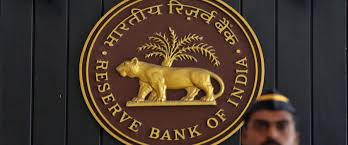Reserve Bank of India controls the monetary policy of India. From taking care of India's gold reserve and forex exchange rate to controlling the inflation; RBI is responsible for a lot things that are crucial to the Indian economy.
Let us have a look at 6 key instruments of RBI that it uses to direct the economy on the right path.
Cash Reserve Ratio (CRR)
CRR refers to that percentage of deposits with the commercial banks which banks are legally required to keep as reserve with the central bank. The central bank decides the ratio and has the power to change it. If the central bank increases CRR, then an increase in the CRR reduces funds for credit creation. Borrowings from banks leads to fall in demand. This helps in inflation.
Statutory Liquidity Ratio (SLR)
SLR refers to the minimum percentage of deposits with the commercial banks which are legally required to keep in the form of liquid assets as reserves with themselves. The central bank has the legal power to determine and change it. An increase in the SLR reduces funds for credit with commercial banks and vice-versa.
Repo Rate (RR)
Repo Rate is the interest rate at which the commercial banks can borrow from the central bank to meet their short term needs. The central bank has the legal power to change it and fixing this rate. Raising RR makes borrowings by the commercial banks costly and leads to decline in demand for borrowings from the banks and vice-versa.
Reverse Repo Rate (RRR)
It is the interest rate at which the commercial banks can deposit their funds with the central bank. The central bank has the legal power to change it and fix it. Raising RRR gives incentive to the commercial banks to park their funds with the central bank. This reduces liquidity with the commercial banks and has adverse effect on their credit creation capability. Borrowing from banks decline lowering demand for goods and services in the economy and vice-versa.
Bank Rate
Bank Rate is the interest rate at which the commercial banks can borrow from the central bank to meet their long term needs. It is also fixed by the central bank. In times of excess demand or inflation, the Central bank increases the bank rate which makes the borrowing expensive and reduces the demand for loans for investment.
Margin Requirements
It refers to the discount fixed by the central bank on the assets mortgaged as security by the borrowers to the commercial banks. Higher the margin, lower the amount one can borrow from the commercial banks
